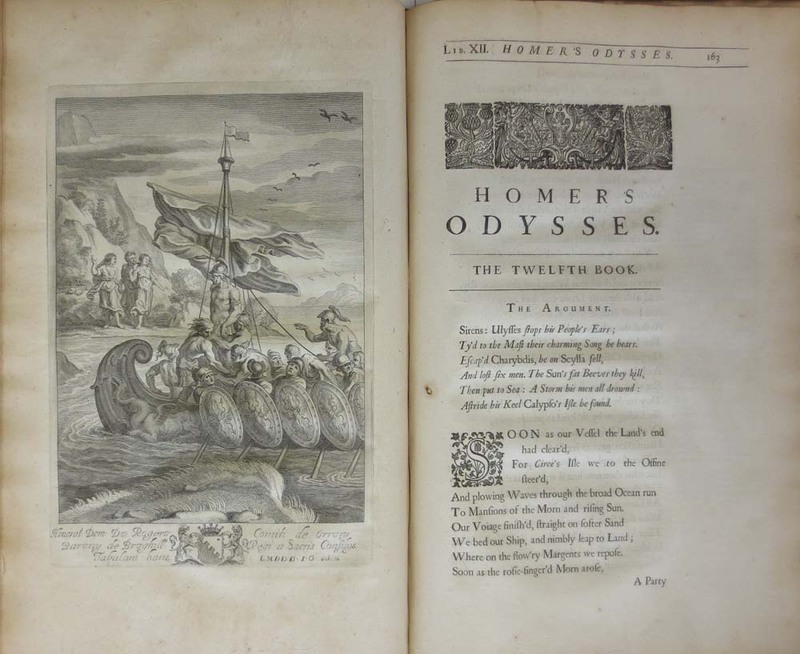His Odysses Translated
Homer.
Homer, His Odysses Translated, Adorn'd with Sculpture and Illustrated with Annotations by John Ogilby, Esq.
London: James Flesher, 1669.
Call Number: (SPL)(FOL) PA 4025 .A5 O4x
Special Collections, Golda Meir Library
Ogilby held various positions during his life such as dancing-master and theatre manager before he pursued his interest in literature near age 50. Known for his translations of Virgil, Homer, and Aesop, Ogilby also began his own press which produced a variety of works including large atlases and geographical treatises until his death in 1676.
Ogilby referred to The Odyssey as "the most Ancient and Best Piece of Moral and Political Learning" which suggests he viewed his work as more than just literary in nature.
Because of his training as an actor, Ogilby retained an interest in the depiction of a scene as well as a sense of line and design. Also, his emphasis on picture or illustration was unusually lavish for his time. Ogilby hired the finest artists to illustrate his editions and became the first publisher to sell the rights to advertisements on his illustrations. Each large plate includes the coat of arms and names of sponsors who paid a fee to memorialize themselves upon an individual illustration within his books. This provided Ogilby with extra capital to produce his books and allowed him to hire higher quality artists and engravers.
Ogilby's translation of The Odyssey is only the second complete English translation and includes scholarly annotations. Following the publication of his translation, his reputation as a scholar and translator of classic texts reached new heights. Thomas Hobbes, who translated The Odyssey in 1675 chose not to include annotations. He wrote: "But why without Annotations? Because I had no hope to do it better than it is already done by Mr. Ogilby."

